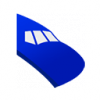
Sign in to follow this
Followers
0

Gdi+ Hello World Example
By
byork, in FSX/FSX-SE Aircraft and Panel Design Forum - How To


By
byork, in FSX/FSX-SE Aircraft and Panel Design Forum - How To